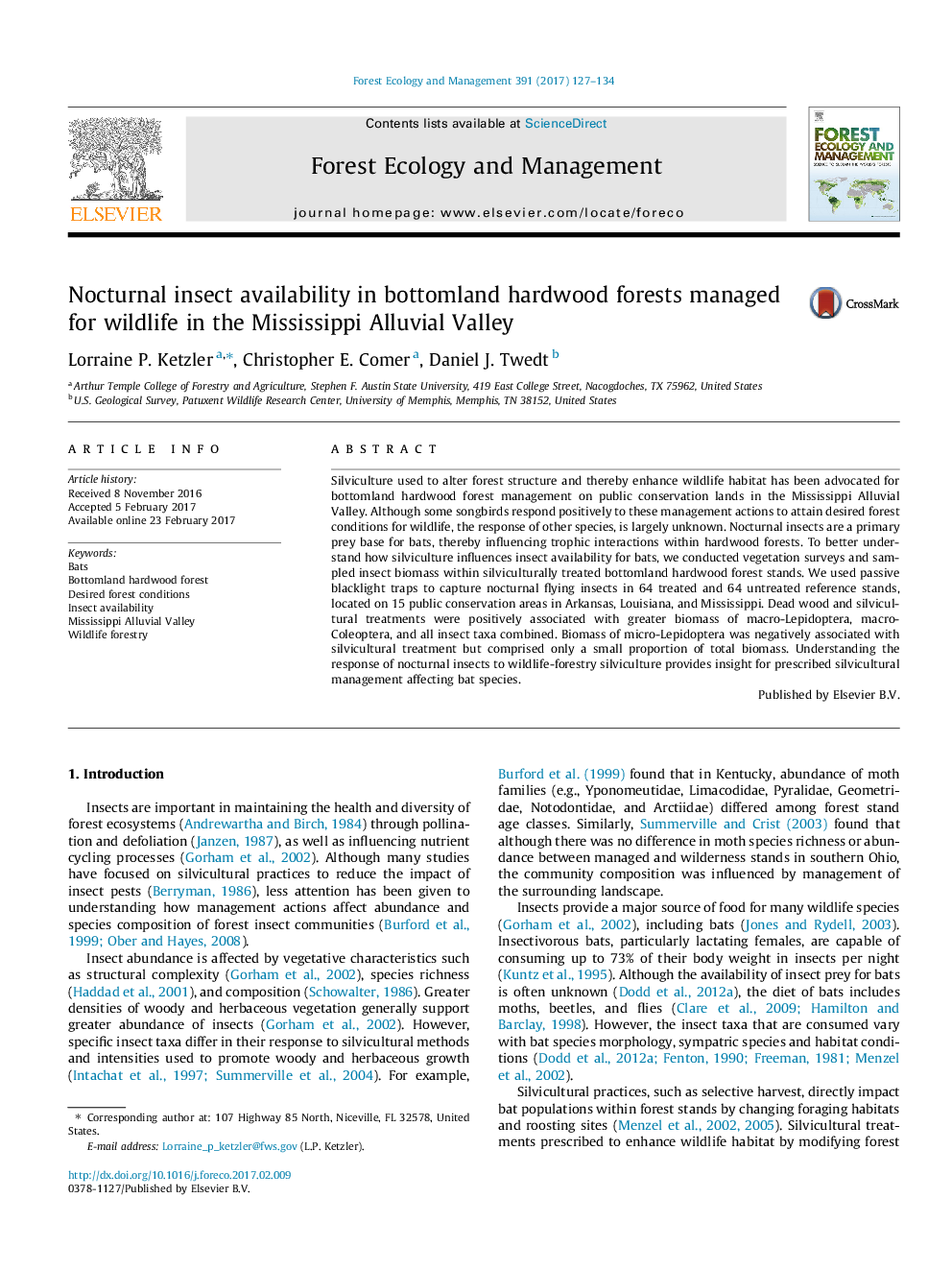| کد مقاله | کد نشریه | سال انتشار | مقاله انگلیسی | نسخه تمام متن |
|---|---|---|---|---|
| 6459406 | 1421367 | 2017 | 8 صفحه PDF | دانلود رایگان |
• Dead wood can be an important predictor of insect biomass in MAV bottomlands.
• Wildlife-forestry in MAV bottomlands can positively influence specific insect taxa.
• Wildlife-forestry in MAV bottomlands indirectly promotes bat prey availability.
Silviculture used to alter forest structure and thereby enhance wildlife habitat has been advocated for bottomland hardwood forest management on public conservation lands in the Mississippi Alluvial Valley. Although some songbirds respond positively to these management actions to attain desired forest conditions for wildlife, the response of other species, is largely unknown. Nocturnal insects are a primary prey base for bats, thereby influencing trophic interactions within hardwood forests. To better understand how silviculture influences insect availability for bats, we conducted vegetation surveys and sampled insect biomass within silviculturally treated bottomland hardwood forest stands. We used passive blacklight traps to capture nocturnal flying insects in 64 treated and 64 untreated reference stands, located on 15 public conservation areas in Arkansas, Louisiana, and Mississippi. Dead wood and silvicultural treatments were positively associated with greater biomass of macro-Lepidoptera, macro-Coleoptera, and all insect taxa combined. Biomass of micro-Lepidoptera was negatively associated with silvicultural treatment but comprised only a small proportion of total biomass. Understanding the response of nocturnal insects to wildlife-forestry silviculture provides insight for prescribed silvicultural management affecting bat species.
Journal: Forest Ecology and Management - Volume 391, 1 May 2017, Pages 127–134
